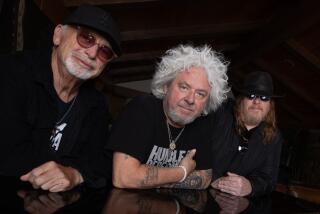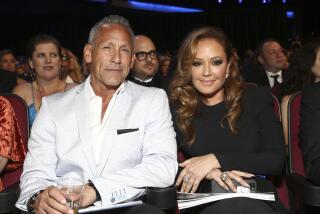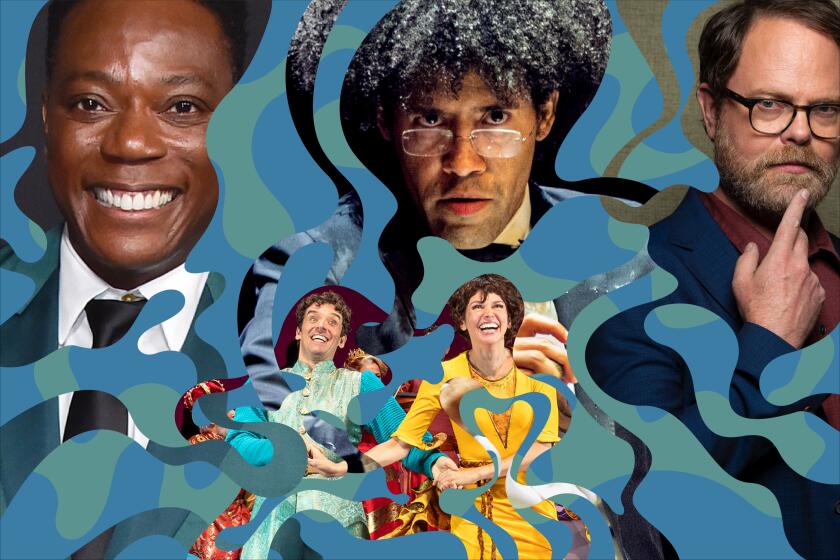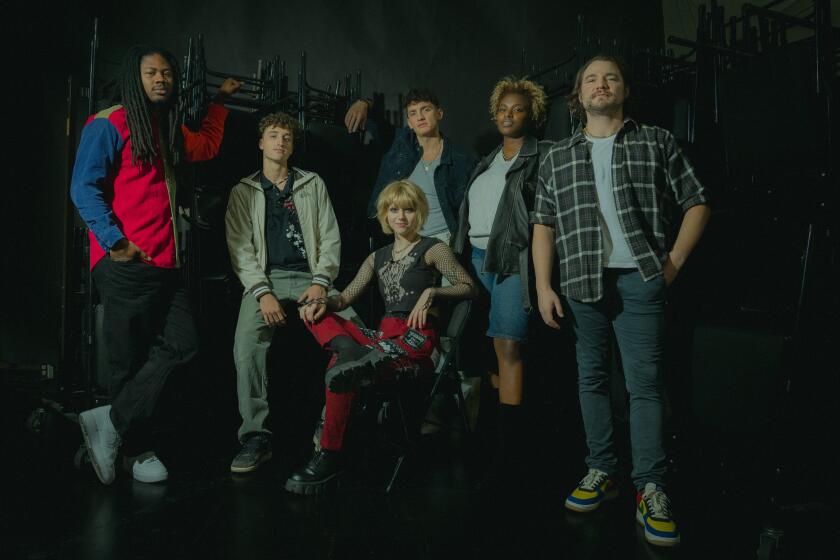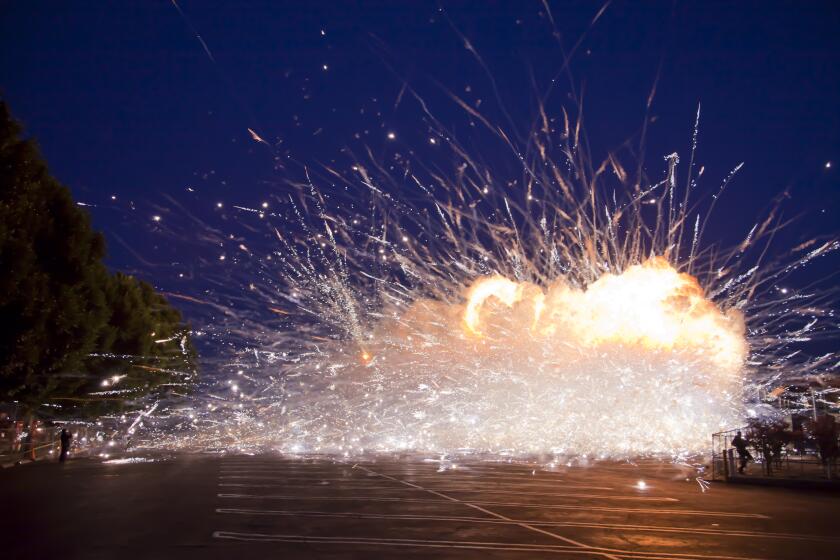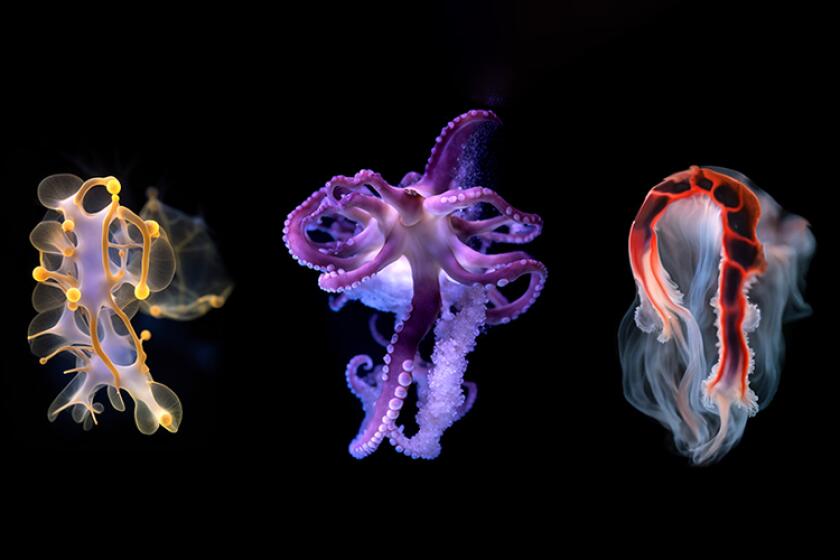ART REVIEW : Face to Face With Faces in ‘Head-On’
“Head-On/The Modern Portrait,” which opened Tuesday in the galleries of the Lannan Foundation, is a show that boasts what woefully few seem able to muster. The exhibition’s hinge is its sense of wide-open discovery, a free-for-all in which viewers are regarded as something other than dutiful students, unknowing children or bored mavens in search of easy entertainment. Rather than passive consumers of an institutional decree, they’re active participants in a critical dialogue.
Significantly, “Head-On/The Modern Portrait” was organized by an artist, not by a professional museum curator. Part of the series called Artist’s Choice initiated by Kirk Varnedoe, director of the department of painting and sculpture at New York’s Museum of Modern Art, where it was first seen, the show was organized by Chuck Close, the New York-based painter who has made portraiture his life’s work, and who has deftly remade the genre in the process. Utilizing MOMA’s celebrated collection, he assembled more than 140 paintings, prints, drawings, photographs and sculptures in a densely provocative installation.
Artists are used to having other people tie up their work into neat packages. That may be why, curatorially, Close chose to cultivate unruliness. Parts of his show have been hung in the style of a 19th-Century salon, with art papering the walls from floor to ceiling (even a door in one wall has been hung with art). Against two long walls rows of overlapping portraits are arranged on three tiers of shelves, while another shelf holds eight portrait busts.
The installation has something of the feel of a storeroom, where art happens to be the inventory. And that’s not a bad working definition of an art museum. What museums do is assemble and organize their inventory, creating orderly narratives about the history of art.
Close shakes up the standard story. The salon-style hanging puts us back in a time before the hierarchies of Modernism were established. The arbitrariness of his display is emphasized by the casual arrangement of pictures leaning on shelves, since it could all be so easily rearranged. While making you subtly aware of the necessity of insightful choices, Close democratizes the pleasurable experience of looking at art.
The unruliness can be startling. You’re not likely to see again any time soon the juxtaposition of a self-portrait silhouette by Dada iconoclast Marcel Duchamp and an antithetically academic pencil rendering by the American realist Paul Cadmus. And under what other peculiar circumstance might you find Alexander Rodchenko’s mesmerizing 1924 portrait of the Russian poet Vladimir Mayakovsky abutted to a 1966 image by Diane Arbus of a New York City transvestite?
The juxtapositions don’t always seem random. You can go through the exhibition and pick out obvious taxonomies by which the art has been temporarily classified.
Most are simple. There are paired images of people wearing glasses, groups of pencil drawings, pictures of the artists’ lovers and clusters of profiles all facing right (that’s how Duchamp came to rest next to Cadmus). A self-portrait diptych of Frida Kahlo and her pet monkey, Fulang-Chang, hangs near a William Wegman photographic diptych of his dog, Fay, and the artist, Ed Ruscha, who growl at one another. And although their work is widely disparate, a 1919 pencil drawing by Pavel Tchelitchew, a painted photograph by Arnulf Rainer dated 1969-74 and a tiny etching from 1981 by Frank Auerbach tell an enduring tale of Expressionist art.
Because endless cross-referencing seems possible, this is a show that can feel new on repeated visits. It can also pull you up short. Cezanne, Brassai, Picasso, Paul Klee, Alice Neel and Cindy Sherman are one thing; but who are (or were) Vincent Canade, Hugo Erfurth and William Roberts?
In this context, it doesn’t really matter that their stars have faded. This is a show about the human face, which includes a very broad spectrum.
In a sleek row of formally idealized busts by Raymond Duchamp-Villon, Gaston Lachaise, Jacques Lipchitz and Elie Nadelman, the aggressively stylized, 1913 bronze head, “Jeannette, IV,” by Henri Matisse made me burst out laughing. An integral part of a famous sequence of increasingly abstracted heads of a woman, the Matisse has so often been used as a classic illustration of the formal development of modern abstraction that I’d never fully thought of it as a portrait of an actual human being. The lost ability to more fully see this head is an example of what the show means to regain.
This makes for an amazingly intimate exhibition, not just in the scale of the work and its installation, but in its subject matter. My guess is that the majority are portraits of artists and writers, but certainly all of them are of friends, family or the artist himself. There doesn’t seem to be an “official” portrait in the bunch.
With the possible exception, that is, of a 1918 profile of Woodrow Wilson. Arthur S. Mole’s and John D. Thomas’s vernacular photograph, composed of an aerial view of 21,000 soldiers arranged in a picture of the President’s face (imagine a halftime show at a football game), is too wacky to count as a serious emblem of officialdom.
The absence of official portraiture turns out to be a defining feature of the genre; it’s one thing that seems to make a modern portrait modern. By dismantling official histories of modern art for his display, Close has pushed this quality into the foreground. You confront it, head-on, “in your face.”
“Head-On: The Modern Portrait” claims one of the great exhibition titles of recent memory. “Head-On” describes the configuration of a portrait, and of our physical relationship to it, but it’s also an amusing, slightly confrontational audience-directive to put on your thinking cap.
As a survey drawn from the collection of a peerless and powerful institution, “The Modern Portrait” also declares itself to be a portrait of “The Modern,” as MOMA is colloquially known. Finally, the show makes you wonder just what modern portraiture can mean. As promulgated by conventional art history--including the one vigorously championed by MOMA--Modernism reached its apogee with the arrival and elaboration of abstract art. Such a perception makes the very possibility of figurative portraiture an iffy enterprise.
As Chuck Close is himself an artist of the figurative persuasion, this last is a wry and witty move by the curator. At the entrance to his show he has installed five of his own works, dating from 1975 to 1990. Close’s paintings and prints are built up from complex, usually gridded networks of small, abstract markings--fragments of intense visual information that come together in your head to create a full picture. Appropriately, his own formidable art turns out to be a touchstone for understanding this exhibition’s remarkable assembly.
* Lannan Foundation, 5401 McConnell Ave., Los Angeles, (213) 306-1004, through Sept. 7. Closed Mondays.
More to Read
The biggest entertainment stories
Get our big stories about Hollywood, film, television, music, arts, culture and more right in your inbox as soon as they publish.
You may occasionally receive promotional content from the Los Angeles Times.
